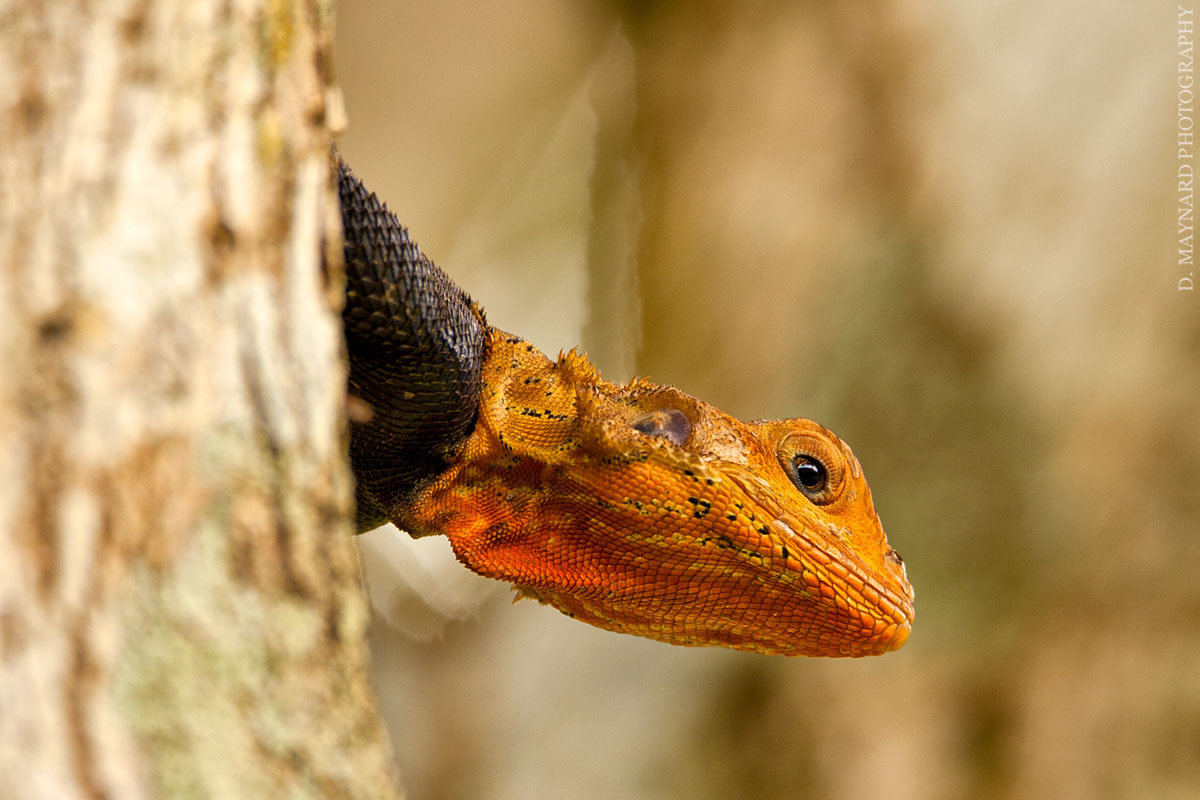 By Jenn Gidman of Tamron
By Jenn Gidman of Tamron
Images By David Guy Maynard
When David Guy Maynard and his assistant, Sammi, headed to Miami to lead a two-workshop weekend, one of the workshops ended up canceled, leaving them an extra day for their own photographic adventures. “We were staying at a campsite in the Redlands agricultural district, right near the entrance to Everglades National Park, and the area is filled with all kinds of fruit trees, like mango and avocado,” David says. “Lizards happen to love fruit, so we decided to go on a nature walk and see what we could find to photograph.”Sammi grabbed her Tamron SP 70-200mm VC G2 lens, while David brought along the SP 150-600mm VC G2. “We didn’t bring tripods, and so we knew these would all be handheld photos, but the Vibration Compensation (VC) feature on both of these lenses is so extraordinary,” he says. “Years ago I never would have tried for these type of handheld images zoomed in at 600mm, but now I do it with the 150-600 lens all the time. Plus the focal-length range allowed me to get some more environmental shots, as well as to zoom in tight when I really wanted to showcase the detail on a lizard’s face or body.”David and Sammi ventured out into the Florida wilderness from about 8 a.m. to sunset, taking just a short break for lunch to cool down. “We stuck to the more open areas in the early morning, when it was cooler and not quite as bright,” he says. “As the sun got more intense throughout the day, we headed into the groves and under tree cover. Most of the images you see here were taken in shaded areas. I didn’t use a flash all day—all of these photos were taken in natural light.”
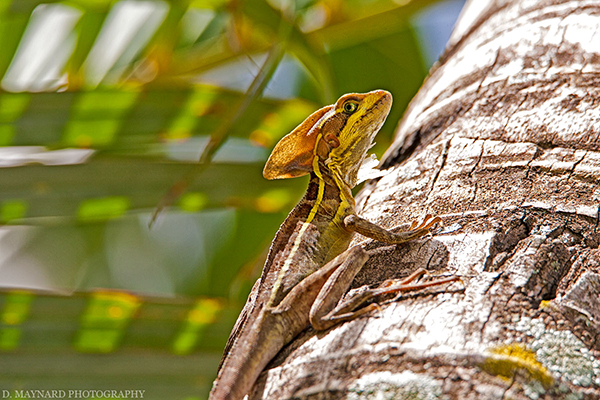
Although you can’t always pick your subjects’ backgrounds when you’re photographing wildlife, you can sometimes manipulate them for a better photo. “In Florida there’s a lizard called the brown basilisk (Basiliscus vittatus), but locals call it the Jesus lizard, because when they get scared and run, they get up on their hind legs and book so fast that they can actually tread water for several yards—like they’re walking on water,” David says. “I took a photo of this basilisk at 10:30 in the morning, in bright Florida sunlight. Obviously, he picked the tree, but I adjusted my angle until I was able to get the palm fronds directly in the background. If I hadn’t done that, I would have been shooting right into a blazingly bright sky. From this perspective, I was able to achieve a beautiful, softened-light background.”
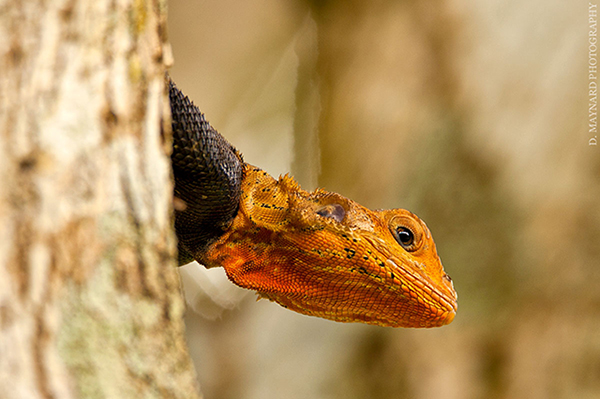
One of David’s favorite species is the West African rainbow lizard (Agama agama Africana), and he had the opportunity to take pictures of quite a few of them during his day’s journey. “They’re not native to here” he says. “And like many other types of reptiles and birds, the males of this species tend to be much more colorful than the females—they use their color as a mating ritual.”
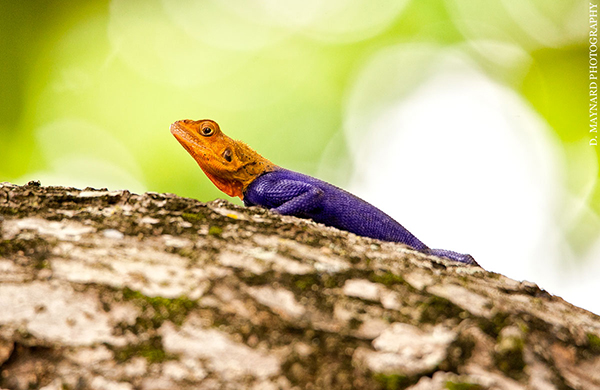
David notes that patience is key in capturing photos like these. “For the picture you see here of the orange-headed Africana with the purple body, he wasn’t exactly cooperating,” he says. “He was hiding behind the branch and would sometimes extend out, but he’d pull away again before I could press the shutter. I spent about 15 to 20 minutes in one spot before I finally got a few shots off. An interesting thing to know about lizards, though: They regulate their body temperature by basking in the sun, so if they’re hanging out in one spot that’s nice and warm, even if you temporarily scare them away, they’ll come back to that same spot if you stay very still. That’s when you’ll get your photo.”
David was able to get a better angle on another male Africana, and by zooming all the way in, he was able to show one of the lizard’s more notable features. “You can see, in great detail, a big pouch of skin under his chin,” he says. “When he’s ready to mate, his colors will become incredibly intense, and that pouch of skin will fan out under his chin. The bigger and more colorful the fan, the better the chances of attracting a female.”
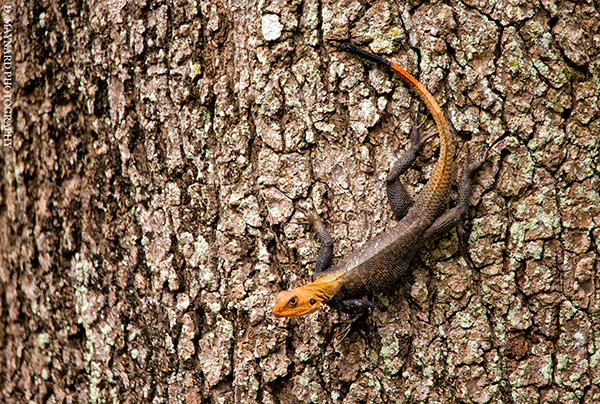
Part of the appeal for David in photographing some of the lizards in front of his lens is that you’ll almost never get the same coloring twice. “Many of them are like chameleons, in that they can change their colors to adapt to their surroundings,” he says. “This male Africana is in a muted stage, but you can see the color transition, most notably in his tail. He was a big guy, about 18 inches long, and he was at my head level on the tree in front of me. He had stopped moving around at this point, which gave me time to compose the image and put him where I wanted to in the frame. He was likely trying to figure out what I was doing, and what I was going to do next.”
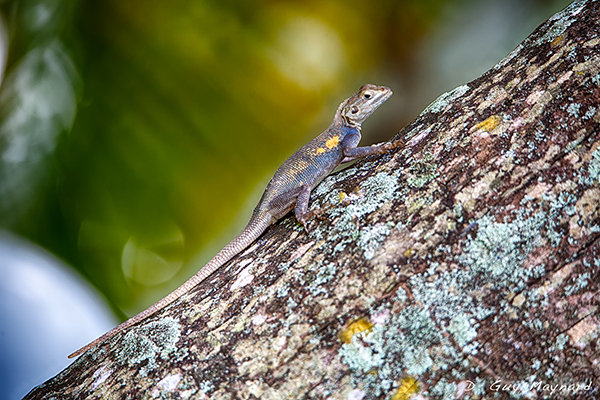
Finding coverage that allowed just the right amount of sunlight in was David’s goal when he explored the more wooded areas, where he found a couple of female Africanas to photograph. “I loved the twinkles of light streaming through those leaves,” he says. “And coming back to how these lizards are chameleon-like: You can see how this particular lizard is able to adapt to the yellow spots of fungus on the tree branch and show that same shade of yellow on her body. She was about 20 feet above the ground, but by zooming in all the way to 600mm, I was able to show that amazing capability these lizards have.”
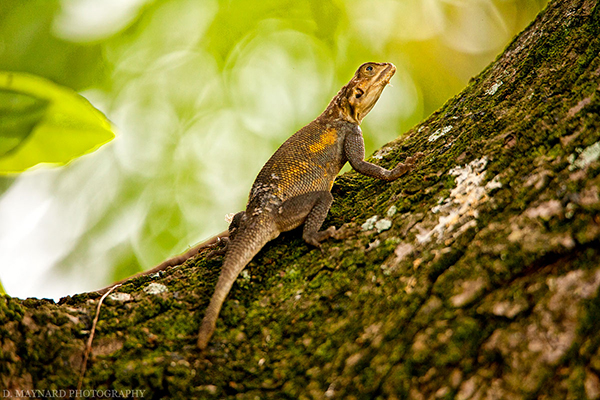
That sun-dappled look also enhanced David’s photo of a female Africana that happened to also be pregnant. “You can see by the way her belly is distended that it’s a mama-to-be,” he says. “Once more, the long reach of the zoom on that lens came through for me, because she was quite aways up in this 60-foot-tall tree—I was fully zoomed in once again to 600mm.”
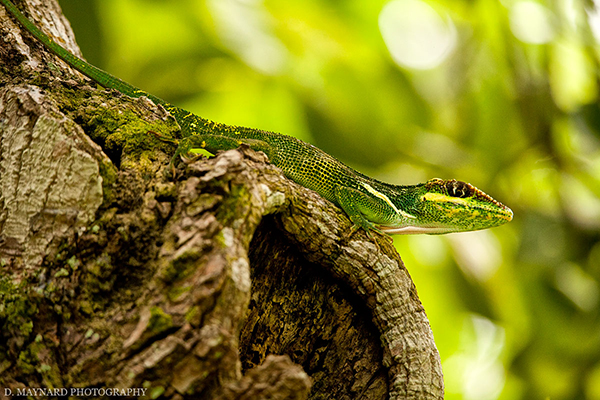
David doesn’t always shoot with his feet planted on terra firma. “I’ll do whatever it takes to get the shot,” he says. And he did, for two photos of a male knight anole (Anolis equestris) that was hiding out in a knotty, centuries-old avocado tree. “The anole was about 18 feet up in the tree, and I couldn’t get a great shot from where I was standing, so I strapped my camera to my back and climbed up about 12 feet to perch on a branch opposite him,” he says. “I was about 15 feet away, but I was still able to get a killer shot zooming in to 600mm.”
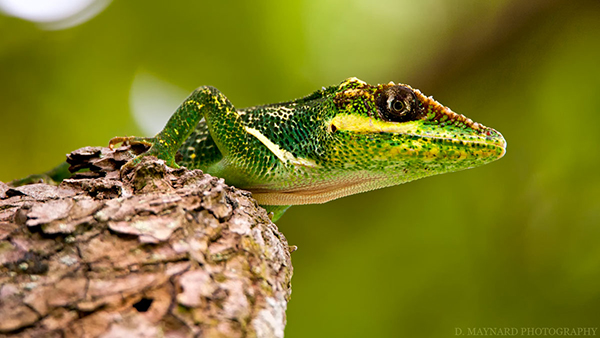
Not that his adventurous attempt to capture the anole’s photo didn’t come with a price. David had found his perfect vantage point in a hollowed-out hole in the tree, but after taking a few photos, he realized the backs of his thighs were itching. “It turns out there was a red ants’ nest in that hole and they didn’t like that I was blocking their sun,” David explains. “So they came out in full force and started biting me. That’s when I decided to get out of the tree—but not before I got the pictures I wanted.”
To see more of David Guy Maynard’s work, go to www.dmaynardphotography.com.








